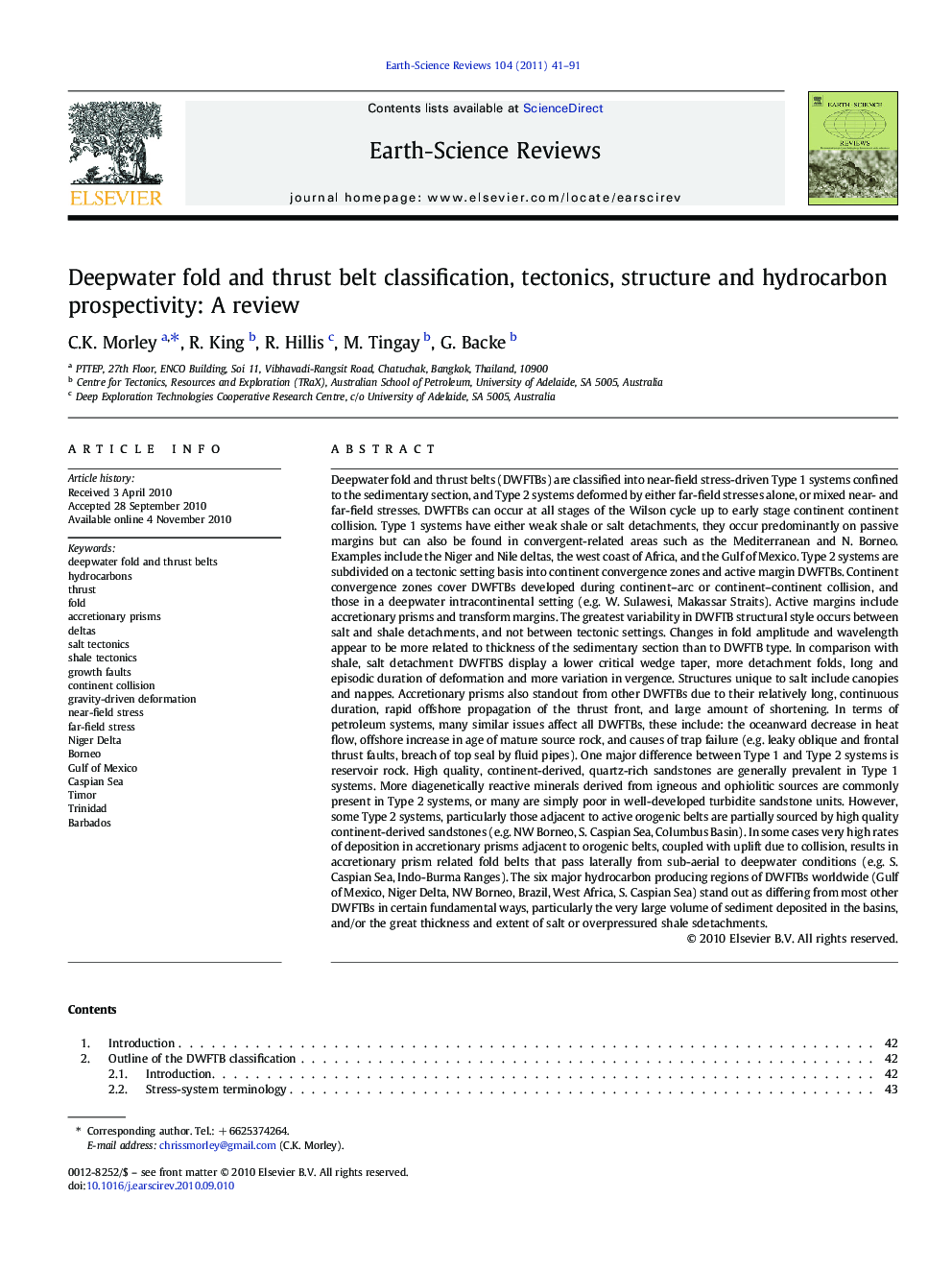| کد مقاله | کد نشریه | سال انتشار | مقاله انگلیسی | نسخه تمام متن |
|---|---|---|---|---|
| 4726209 | 1640007 | 2011 | 51 صفحه PDF | دانلود رایگان |

Deepwater fold and thrust belts (DWFTBs) are classified into near-field stress-driven Type 1 systems confined to the sedimentary section, and Type 2 systems deformed by either far-field stresses alone, or mixed near- and far-field stresses. DWFTBs can occur at all stages of the Wilson cycle up to early stage continent continent collision. Type 1 systems have either weak shale or salt detachments, they occur predominantly on passive margins but can also be found in convergent-related areas such as the Mediterranean and N. Borneo. Examples include the Niger and Nile deltas, the west coast of Africa, and the Gulf of Mexico. Type 2 systems are subdivided on a tectonic setting basis into continent convergence zones and active margin DWFTBs. Continent convergence zones cover DWFTBs developed during continent–arc or continent–continent collision, and those in a deepwater intracontinental setting (e.g. W. Sulawesi, Makassar Straits). Active margins include accretionary prisms and transform margins. The greatest variability in DWFTB structural style occurs between salt and shale detachments, and not between tectonic settings. Changes in fold amplitude and wavelength appear to be more related to thickness of the sedimentary section than to DWFTB type. In comparison with shale, salt detachment DWFTBS display a lower critical wedge taper, more detachment folds, long and episodic duration of deformation and more variation in vergence. Structures unique to salt include canopies and nappes. Accretionary prisms also standout from other DWFTBs due to their relatively long, continuous duration, rapid offshore propagation of the thrust front, and large amount of shortening. In terms of petroleum systems, many similar issues affect all DWFTBs, these include: the oceanward decrease in heat flow, offshore increase in age of mature source rock, and causes of trap failure (e.g. leaky oblique and frontal thrust faults, breach of top seal by fluid pipes). One major difference between Type 1 and Type 2 systems is reservoir rock. High quality, continent-derived, quartz-rich sandstones are generally prevalent in Type 1 systems. More diagenetically reactive minerals derived from igneous and ophiolitic sources are commonly present in Type 2 systems, or many are simply poor in well-developed turbidite sandstone units. However, some Type 2 systems, particularly those adjacent to active orogenic belts are partially sourced by high quality continent-derived sandstones (e.g. NW Borneo, S. Caspian Sea, Columbus Basin). In some cases very high rates of deposition in accretionary prisms adjacent to orogenic belts, coupled with uplift due to collision, results in accretionary prism related fold belts that pass laterally from sub-aerial to deepwater conditions (e.g. S. Caspian Sea, Indo-Burma Ranges). The six major hydrocarbon producing regions of DWFTBs worldwide (Gulf of Mexico, Niger Delta, NW Borneo, Brazil, West Africa, S. Caspian Sea) stand out as differing from most other DWFTBs in certain fundamental ways, particularly the very large volume of sediment deposited in the basins, and/or the great thickness and extent of salt or overpressured shale sdetachments.
Journal: Earth-Science Reviews - Volume 104, Issues 1–3, January 2011, Pages 41–91